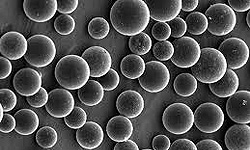Iranian Scientists Produce Glutamate Biosensor by Using Carbon Nanotubes
Iranian researchers from Sharif University of Technology succeeded in producing glutamate biosensor by using carbon nanotubes through photo-lithography method.
This electrode production method is a cost-effective and simple substitution for lithography methods.

Choosing electrode materials for the production of nano-electrode arrays generally plays a key role in the determination of measurement properties of the device. Carbon nanofibres and nanotubes have shown promising results in order to produce small nano-electrode biosensors by using electron beam lithography.
Researchers of the plan produced a glutamate biosensor based on carbon nanotubes with vertical arrangement by using photo-lithography in addition to carving by reactive ion etching (RIE) as a post-preparation stage for the substitution of electron beam lithography, and they compared its performance with that of the biosensor previously synthesized by the group.
Carbon nanotube nano-electrode array with vertical arrangement synthesized through the simple lithography method combined with RIE technique provides a cost-effective and simple replacement in comparison with electron beam lithography method in order to obtain electrode with an area of around 200 × 200 µm2.
The promising results identify the suggested electrode as an appropriate choice for the determination of a wide range of biological markers. In line with the rapid progress in sciences, the need for small measurement systems in various field of the new life arises. Nano-electrode array is considered as an appropriate choice at present as the technology to increase the size of analysis systems.
Source: Nanotechnology Now
- 409 reads
Human Rights
Fostering a More Humane World: The 28th Eurasian Economic Summi

Conscience, Hope, and Action: Keys to Global Peace and Sustainability

Ringing FOWPAL’s Peace Bell for the World:Nobel Peace Prize Laureates’ Visions and Actions

Protecting the World’s Cultural Diversity for a Sustainable Future

Puppet Show I International Friendship Day 2020

